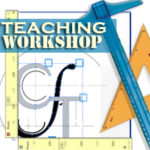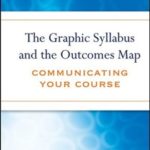‘visual thinking’
cft offers new guide: “beyond the essay: making student thinking visible in the humanities”
oct. 21, 2013—in august, the cft announced a theme for much of our programming this year: students as producers. a new guide written by cft assistant director nancy chick applies this theme to the disciplines in the humanities. “beyond the essay: making student thinking visible in the humanities” explores assignments that fulfill three goals: making student knowledge...
beyond the essay, ii
oct. 14, 2013—print version formative activities: snapshots of learning in process concept maps & word webs || word clouds as bass noted in his visible knowledge project work with faculty, what “most interested—or eluded—them about their students’ learning” involved the “’intermediate processes’” that occur before students write a paper or take an exam. they were particularly eager...
beyond the essay, iii
oct. 14, 2013—print version summative assignments: authentic alternatives to the essay metaphor maps || student anthologies || poster presentations the essay is often the go-to assignment in humanities courses, and rightfully so. especially in the text-based disciplines, the craft of the essay is highly valued as part of practicing the work of the field. more broadly, developing...
beyond the essay: making student thinking visible in the humanities
oct. 14, 2013—by nancy chick print version cite this guide: chick, n. (2013). beyond the essay: making student thinking visible in the humanities. 瑞士vs喀麦隆走地 2022年世界杯中国小组赛积分. retrieved [todaysdate] from //www.imrbdigital.com/guides-sub-pages/beyond-the-essay/. “we asked faculty to ask themselves the most important questions they could about student learning in their courses. how did they know that their students...
finding non-copyrighted images for presentations
jan. 18, 2013—by derek bruff, cft director [note: i prepared this guide for the faculty participating in vanderbilt’s coursera pilot, but i believe it will be useful to any instructor interested in using more images in presentations and lectures. it’s based on a post i wrote for the cirtl network last year. –derek] a couple of years...
student-created infographics and a seated poster session: two experiments in teaching statistics
jun. 4, 2012—by cft director derek bruff this past spring i taught math 216, an introduction to statistics for engineering majors, for the fourth time in recent years. in order to make the course a bit more lively for me and for the students and to reflect the growing importance of visualization techniques in statistics, i added...
talking with faculty about cognitive science & learning (pod essays on teaching excellence)
feb. 16, 2012—cft assistant director nancy chick previews an essay by john girash, harvard university, appearing in essays on teaching excellence published by the professional and organizational network in higher education. in “talking with faculty about cognitive science & learning,” one of the essays in pod’s new essays on teaching excellence, john girash of harvard connects the brain...
tell and show: resources from a workshop on images in presentations
jan. 25, 2012—this afternoon, cft staff derek bruff and rhett mcdaniel are facilitating a workshop titled “tell and show: why and how to use images in presentations.” below you’ll find the visuals from the first part of this workshop. click the arrow button to advance through the presentation, or use your mouse to pan and zoom around....
upcoming event: tell and show: why and how to use images in presentations
jan. 18, 2012—join us for this upcoming teaching workshop! tell and show: why and how to use images in presentations date & time: january 25, 4:10-5:30 facilitator: derek bruff, director & rhett mcdaniel, educational technologist format: teaching workshop audience: faculty, graduate and professional students,...
from the stacks…
jan. 17, 2012—the graphic syllabus and the outcomes map: communicating your course by linda b. nilson from the publisher… an instructor’s topical organization is the basic framework of his or her course as well as the core of the syllabus. this book shows college instructors how to communicate their course organization to students in a graphic syllabus–a...









